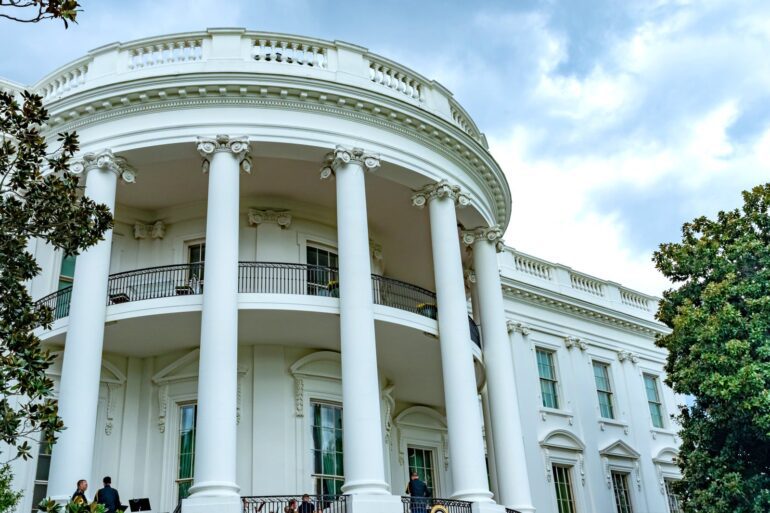TL;DR:
- White House to release an executive order on AI.
- The order will emphasize government procurement of AI technology.
- The National Institute of Standards and Technology will refine AI industry guidelines.
- Cloud computing companies will be mandated to monitor AI system developers.
- Measures to streamline AI talent recruitment and boost domestic training.
- The order reflects the White House’s leadership in AI regulation.
- The US aims to catch up with the UK and Europe in AI regulation.
- The executive order is expected to influence the AI market significantly.
Main AI News:
In a highly anticipated move, the White House is poised to release an executive order that will have a profound impact on the artificial intelligence (AI) landscape. This executive order, which has been long-awaited, is expected to harness the vast purchasing power of the federal government to influence and redefine American standards for a technology that has surged ahead, outpacing regulators. Three individuals privy to the White House’s deliberations have provided insights into the order’s key provisions.
The Biden administration recognizes the urgency of addressing AI’s rapid evolution and its potential consequences. Hence, this executive order is anticipated to focus on several critical areas. Firstly, it will emphasize government procurement of AI technology, leveraging its purchasing power to shape the industry. Secondly, it will call upon the National Institute of Standards and Technology to refine industry guidelines for testing and evaluating AI systems, building upon voluntary commitments to safety, security, and trust extracted from 15 major tech companies this year.
Additionally, the executive order is expected to mandate that cloud computing companies closely monitor and track users engaged in the development of powerful AI systems. It is also likely to contain provisions aimed at streamlining the recruitment and retention of AI talent from overseas and bolstering domestic AI training and education initiatives.
Although the White House has not disclosed specific details of the executive order, which is still in the finalization stage, it is anticipated to be unveiled in late October.
In the absence of substantial progress on broad AI legislation in Congress, the White House has taken a leading role in shaping the American conversation on AI regulations. President Biden’s announcement in July regarding the drafting of this executive order represents the administration’s most assertive move to mitigate AI risks while safeguarding American competitiveness in the global technology race.
The White House’s strategy to wield Washington’s market influence to influence AI vendors vying for government contracts mirrors the approach taken in California, where Governor Gavin Newsom signed a similar executive order in consultation with the White House. Furthermore, Senator Gary Peters (D-Mich.) in Congress is spearheading legislative efforts to regulate the government’s handling of AI.
However, it is important to note that the United States is playing catch-up in the global AI landscape. The United Kingdom aims to reach agreements on “dangerous” AI at an upcoming international summit, while Europe is making strides toward passing its pioneering AI Act.
Suresh Venkatasubramanian, a computer scientist who co-authored an AI Bill of Rights blueprint during his tenure at the White House Office of Science and Technology Policy, emphasized that an executive order on AI sends a powerful signal to the public, exerting pressure on Congress to take action.
This executive action builds upon years of White House efforts to establish AI standards. The Trump administration issued an executive order in 2019 to drive American leadership in AI, and in October 2022, the Biden administration introduced its non-binding AI Bill of Rights, outlining broad principles for governing automated systems with an emphasis on protecting civil rights.
Recently, a coalition of congressional Democrats urged President Biden to codify these principles in the upcoming AI executive order. Furthermore, in early 2023, following the release of OpenAI’s ChatGPT, which drew national attention to the risks and capabilities of consumer AI technology, President Biden signed an executive order mandating that federal agencies protect the public from “algorithmic discrimination.” Subsequently, the White House secured voluntary commitments on AI safety, security, and trustworthiness from 15 leading AI companies.
Details about the content and timing of the forthcoming executive order remain somewhat elusive. Arati Prabhakar, the head of the White House Office of Science and Technology Policy, described it as a broad and comprehensive initiative during a virtual talk in late September. Additionally, there are indications of a classified annex within the executive order, tailored to address national security use-cases for AI. Reports also suggest that the White House is contemplating reporting requirements for cloud computing providers and intends to formalize some of the voluntary commitments obtained from tech CEOs.
As the executive order touches on procurement and federal grantmaking, it will undoubtedly shape the market landscape significantly, forcing companies to adapt to the new AI regulations and standards set forth by the federal government.
Conclusion:
The forthcoming White House AI executive order represents a significant step in shaping the AI landscape. By leveraging government procurement power and refining industry guidelines, the order aims to address AI’s rapid evolution. It underscores the White House’s proactive role in regulating AI, positioning the US to maintain its competitive edge in this rapidly advancing sector.

